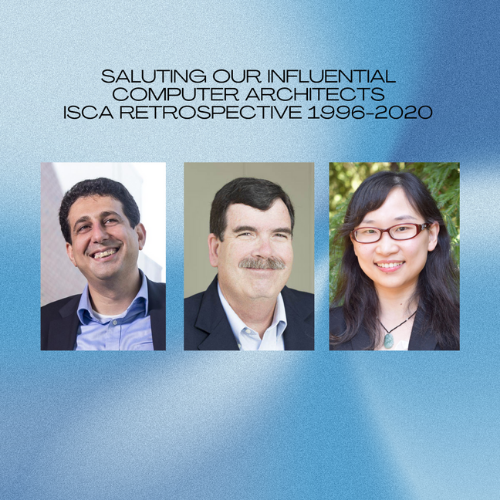
By Kimberley Clementi
In commemoration of its 50th anniversary, the International Symposium on Computer Architecture (ISCA) has compiled a volume of memorable papers – a 25-Year Retrospective: 1996-2020 – to demonstrate the progression of research within computer architecture. The compilation of 98 research papers, culled from a pool of over a thousand submissions, included nine papers from UC San Diego’s Department of Computer Science and Engineering (CSE).
That means CSE faculty were involved in 10 percent of the selected papers.
Hadi Esmaeilzadeh had four research papers included in ISCA’s retrospective, as did CSE Professor Dean Tullsen. Jishen Zhao, an associate professor in the department, had one paper selected.
For more than two decades, their collective research has impacted the trajectory of computer architecture – spanning ground-breaking discoveries related to dark silicon, processors, simultaneous multithreading, and memory systems, enabling applications in machine learning, virtual reality, augmented reality, and artificial intelligence.
Papers for ISCA’s second commemorative volume were chosen by a team of referees to reflect the exciting evolution of computer architecture and share areas of potential growth. ISCA’s first volume, its 25th anniversary retrospective, was published in 1998.
CSE faculty research included in ISCA@50 25-Year Retrospective: 1996-2020:
Hadi Esmaeilzadeh – Bridging Computer Architecture and New Applications
Esmaeilzadeh, the inaugural holder of the Halıcıoğlu Chair in Computer Architecture at UC San Diego, is building the computer architecture that will enable AI and ML technologies of the future. He and his colleagues have focused on bridging the gap between the microarchitecture of processors and the increasing levels of performance required by computation-hungry applications. His highly-cited 2011 paper outlined this dilemma, while his more recent research proposes an architectural framework – dubbed Bit Fusion – developed to preserve accuracy while enabling ultra-power efficiency for deep learning.
- 2011
Dark silicon and the end of multicore scaling
- 2014
A reconfigurable fabric for accelerating large-scale datacenter services
- 2014
General-purpose code acceleration with limited-precision analog computation
- 2018
Bit Fusion: Bit-Level Dynamically Composable Architecture for Accelerating Deep Neural Network
Dean Tullsen – Standing the Test of Time
Widely considered one of computer architecture’s most influential researchers, CSE Professor Dean Tullsen has amassed five Test of Time Awards. This includes one for novel research on heterogenous multi-core architectures, which led to the design of many modern processors such as Qualcomm’s Snapdragon and Apple’s M1Pro and M1Max. Tullsen’s earlier contributions – including the introduction of simultaneous multithreading – were also deeply grounded in the issues of real, industry-leading processor design.
- 1996
- 1999
Selective value prediction
- 2004
Single-ISA Heterogeneous Multi-Core Architectures for Multithreaded Workload Performance
- 2005
Interconnections in Multi-Core Architectures: Understanding Mechanisms, Overheads and Scaling
Jishen Zhao – Creating Memorable Work in PIM
Zhao’s research stretches the boundary between computer architecture and system software, particularly in memory systems. Her 2016 ISCA paper showcases the possibilities that arise from combining emerging applications such as AI with technologies like ReRam, playing a crucial role in advancing research in Processing-in-Memory (PIM).
- 2016
PRIME: a novel processing-in-memory architecture for neural network computation in ReRAM-based main memory

